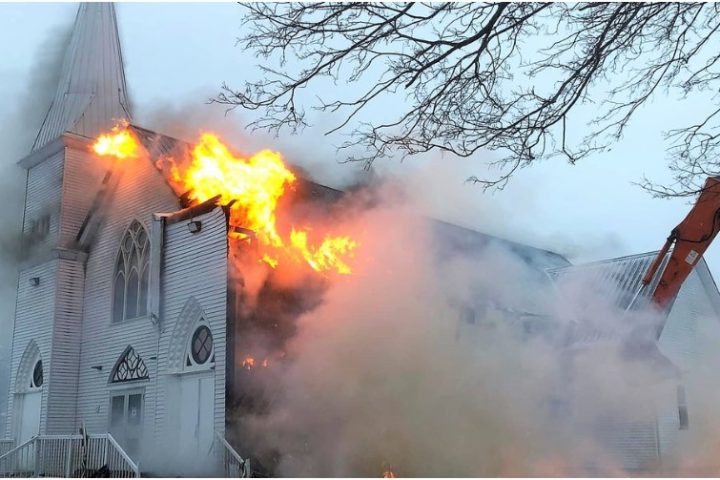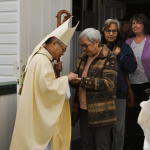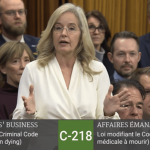According to the Catholic Civil Rights League’s (CCRL) Church Attacks Database, at least 85 Catholic churches have been set ablaze or vandalized since the unproven discovery on May 27, 2021, of 215 suspected unmarked graves near the former Kamloops Indian Residential School.
Police are investigating the latest victimized house of worship, St. Gabriel Catholic Mission Church in Janvier, Alta., on Dec. 15. The church was not in use at the time of the fire.
Phil Horgan, the CCRL’s president and general counsel, suggested that ill-advised comments by public officials, particularly Justin Trudeau, and speculation-driven narratives have created an environment where crimes against Catholics are societally tolerated and justified.
“It is sad,” said Horgan. “If I could paraphrase the Prime Minister, when I think he suggested that some of the frustration by the folks giving rise to this was, quote, understandable. The reality is when we have a continued assertion of false claims of mass graves and missing children or speculation in the absence of better evidence, much of this criminal activity is likely to continue.”
The controversial quote uttered by Trudeau on July 2, 2021: “I understand the anger that’s out there against the federal government, against institutions like the Catholic Church. It is real and it’s fully understandable, given the shameful history that we are all becoming more and more aware of and engaging ourselves to do better as Canadians.”
Trudeau, in fairness, also stated, “It is unacceptable and wrong that acts of vandalism and arson are being seen across the country, including against Catholic churches.”
Sixty-eight Christian churches were burned or defaced between June and July 2021. The crime wave ignited on June 21 with the torching of Sacred Heart Mission Church in Penticton B.C., and St. Gregory Mission Church, near Osoyoos, 40 minutes away. Two days later Cowessess First Nation reported 751 unmarked graves near the Marieval Indian Residential School, and the Lower Kootenay Band claimed on June 30 that ground-penetrating radar identified 182 sets of human remains in unmarked graves outside St. Eugene’s Mission School.
Fury and judgment against the Canadian Catholic community increasingly smouldered as story after story with seemingly damning revelations got published one right after another. And each received intense mainstream media coverage. Angry graffiti messages smeared the outside of churches. “Colonizers,” “killers,” “if you hurt and/or kill kids, (you) should be burned alive,” and a slew of f-word epithets were among the many scrawled derogatory missives.
Over two years later, the credibility of certain declarations made during 2021 is apparently not holding up.
“We have now had at least three actual excavations,” said Horgan. “Pine Creek residential school, which is the Minegoziibe Anishinabe First Nation, where there was alleged to be 14 (unmarked gravesites) at the former Our Lady of Seven Sorrows Catholic Church, which was no longer a church in use. It is used as a community centre. They did an excavation with the knowledge of the RCMP, and as I recall from the press conference in late August, the Chief (Derek Nepinak) was disappointed that they didn’t find any bodies.”
Multiple publications reported Nepinak acknowledging the results “will feed into a denialist narrative of what happened at residential schools” and urged people to keep seeking the truth.
Horgan also cited that in 2021 Nova Scotia excavators did not find the remains of 16 young people who attended the Shubenacadie Residential School. He added that 34 excavations on the Charles Camsell Hospital grounds in Alberta have also uncovered zero bodies to date.
No excavations sanctioned by any government or the Tk’emlúps te Secwépemc First Nation have been conducted at the alleged unmarked grave sites near Kamloops Indian Residential School where all the fury began.
Skeptics of the May 2021 claim that as many as 215 Indigenous children were buried there attempted a dig last July. Kimberly Murray, the special interlocutor for missing children and unmarked graves and burial sites, condemned these residential school “denialists.”
“Denialism is violence. Denialism is calculated. Denialism is harmful. Denialism is hate.”
Horgan expressed concern over Murray, the former executive director of the Truth and Reconciliation Commission of Canada, calling for “legal mechanisms to address denialism, including the implementation of both civil and criminal sanctions” in her interim report last June. Some members of government have expressed their support.
“Let’s suppress the historical record and investigations to discover the truth,” said Horgan. “This is of great concern. It’s not as if the Catholic Church has done much to address the hurt and pain. The Pope came to Canada in 2022, as you know, and they continue to engage the fundraising effort to try and address these things.
“But when it comes to the actual underlying story, we’re still met with ‘most kids went to residential school.’ No. Of the 150,000 recognized by the Truth and Reconciliation Commission, it is roughly 30 or 32 per cent of Indigenous children over a 100-year span. A slightly higher number actually went to day schools either on the reserve or in a community and the others didn’t go to school. It is not as if the RCMP was picking kids up and taking them to schools. Parents were signing kids up.”
NDP MP Leah Gazan is among the politicians with an appetite to do what Murray is requesting. Last February, Gazan called for a hate speech law to combat residential school denialism. In October 2022, she succeeded in securing unanimous consent for her motion calling on the federal government to recognize Canada’s residential schools as genocide.
There is manifestly less urgency for the House of Commons to condemn the arson and vandalism of Canadian churches. Liberal and NDP members voted down Conservative MP Arnold Viersen’s motion on Oct. 24 for the Indigenous and Northern Affairs committee to condemn the arson and attacks on churches, offer condolences for community members and call for perpetrators to face justice.
Horgan wants to be clear that he is not calling to suppress other historical wrongs or to “overlook some elements of grave concern, which most Canadians have as Canadians are fair-minded people.”
“But this effort to portray these instances of missing children as an effort of cultural or other form of genocide I think is a huge overreach and is a slur against a lot of very good people who did incredible work over the past century,” said Horgan. “While we may have the franchise on turning the other cheek, I think on the other side we also have to try and ensure there is a better telling of the actual facts.”
In Horgan’s estimation, more serious reporting on narrative-challenging elements of this saga is being done by publications in the U.S. and overseas than by Canadian mainstream media.
“It’s the old adage,” said Horgan, “that the lie finds its way onto page one and the retraction and apology may come on page 37 six months later.”
The work will continue for CCRL in 2024 to fight for truth on this issue. The non-profit plans to invest in transforming its church attacks database into a more user-friendly and effective tool for any Canadians concerned about the number of vandalized or destroyed churches.




